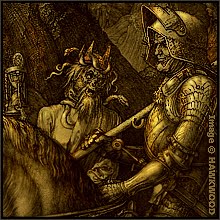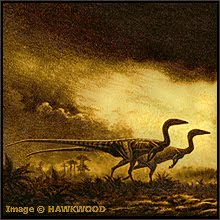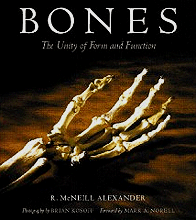I began my previous post by speculating about keeping a pet dinosaur. It was only a short while after I posted it, however, before I realised that I already had done just that! When I lived in Australia I had a pet canary which, in a blaze of originality, I had christened Birdie. Despite his modest size, Birdie was as much of a dinosaur as any other bird alive today, for science now recognises no distinction. In fact, as far as scientific classification goes, there are no birds – just dinosaurs which are classified either as non-avian (all those dinosaurs which we traditionally think of as being just that) and avian (all dinosaurs which we now think of as birds). Or to put it another way: dinosaurs never actually became extinct – they just became birds.
In 1861, just two short years after Charles Darwin shook the prevailing world view with his publication On the Origin of Species, and as if on cue to reinforce all which he claimed, the fossil of a single perfect feather was found in a limestone quarry in Bavaria. The fossil beds were one hundred and fifty million years old, placing the bird within the Late Jurassic. But did the feather really belong to a bird? Nine subsequent finds from the same location (the specimen in the Berlin Museum, above) revealed remarkably preserved fossils of an animal no larger than a raven, which shared the characteristics of both dinosaurs and birds. The feathered wings and tail were clearly visible, but in place of a bird’s beak, this creature had a jawfull of sharp carnivore teeth (the claws and skull of the recently discovered 'Thermopolis' specimen, below).
And not only that: the sternum (breast bone), which in flying birds is massively developed as a distinctive keel shape to anchor the strong pectoral muscles needed for the wing downstroke in flight, was comparatively small and flat. And this animal had a long bony tail, gastralia (belly ribs), and functional grasping claws on its forelimbs – all typical characteristics of raptorial dinosaurs – but not of birds. Science named the animal Archaeopteryx lithographica – Archaeopteryx meaning ‘Ancient Wing’, and lithographica, because the quality limestone quarried at the site was used in the then-prevailing lithographic printing process.
Whether we regard Archaeopteryx as a bird or as a dinosaur has very much to do with our own classifying mindset. In reality, the fluid evolutionary mechanisms of nature do not express themselves in these clear-cut terms. It is both and neither – although for science it is a dinosaur with flight capabilities. But how well could it fly, if at all? The clearly-defined wings of the fossil powerfully suggest the idea, but the skeletal anatomy speaks against it. With a good head wind it might have managed a brief glide, although probably not much more than this. When I made a rough sketch of the overall body shape (above) what became clear was that this animal was a good runner – another trait of its raptorial dinosaur connections. In fact, one fossil of Archaeopteryx which was preserved without feather impressions was for decades thought to be a fossil of the small carnivorous dinosaur Compsognathus, whose habitat Archaeopteryx shared.
Earlier this year, and just over a century and a half after its first discovery, the fossil of that compelling single feather (above, with below it, my drawing of a chicken feather for comparison) was re-examined. Using a powerful electron scanning microscope, the parts of the cells which produced pigmentation, known as melanosomes, were isolated and determined to be black. Black melanosomes would serve to strengthen the feather’s structure, making it more durable, and so aid any attempted flight. The discovery had its consequences for me personally, because some ten years earlier I had painted this ‘portrait’ of Archaeopteryx (below), and with the information which I then had to work with, my choice of colours was wholly speculative.
But in my reconstructional art I passionately believe that, as in science, I have to follow wherever the available evidence takes me. With this new evidence now to hand, a rethink was clearly in order. I scanned in my original acrylic painting and digitally repainted the colours (below) to reflect these latest findings. And interestingly – and contrary to my own expectations – I find this second updated version more convincing.
At the moment, we do not know whether Archaeopteryx was an overall black, or whether this applied only to the flight feathers, of which the single feather is one. But now I find that I rather enjoy the idea of a black Archaeopteryx, with its raven-dark wings catching a flash of iridescence in the sunlight as, hesitantly and experimentally on some far Jurassic Kitty Hawk beach, it took advantage of a strong onshore breeze and raised itself for a few momentous seconds above the sands.
Hawkwood
Source:
Ryan M. Carney, Jakob Vinther, Matthew D. Shawkey, Liliana D'Alba & Jörg Ackermann:
New evidence on the colour and nature of the isolated Archaeopteryx feather
Published as Article #637 in Nature Communications, 24 January 2012
Notes:
In his chapter on theropods in The Complete Dinosaur, edited by James O. Farlow and M. K. Brett-Surman, Philip J. Currie mentions that dinosaurs and birds share more than one hundred and twenty common characters in their anatomical features, and he concludes that '..the only character to define birds (from dinosaurs) is their ability to fly.' I would also add that all theropod dinosaurs and birds share the distinctive character of pneumatic (hollow) bones, and that it's worth remembering that feathers are simply modified reptile scales.



























No comments:
Post a Comment
You are welcome to share your thoughts..